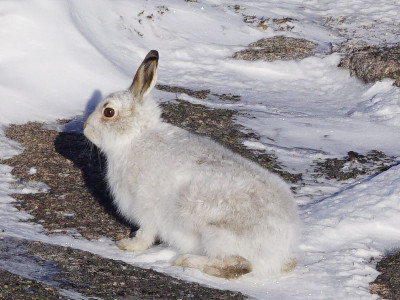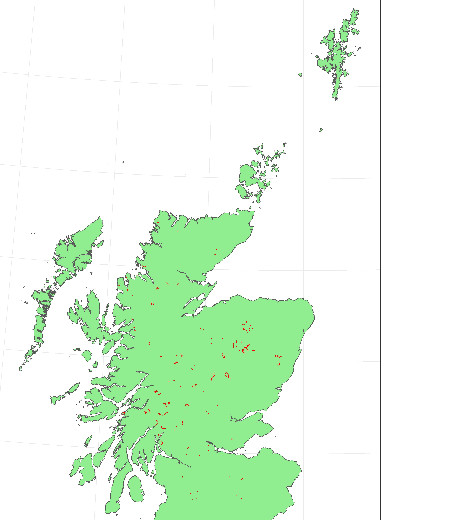Wednesday 20th October 2021, 2:04pm

A survey for mountain hares, involving volunteers, started this spring in March and is starting to produce results now that Covid-19 travel restrictions are no longer an issue.
This is the first on-the-ground national survey to shed light on distribution and numbers of Scottish mountain hares, calling on outdoor enthusiasts to help record sightings of them when out and about in the hills. The survey is ongoing and is still open for hillwalkers, climbers and ski tourers to participate over autumn and through the winter.
Launched in March this year, 30 outdoor enthusiasts have so far used the free Mammal Mapper app to record sightings of mountain hares, resulting in 193 separate walks, covering almost 900km of hillside. It is early yet in gathering data, but so far from these snapshot surveys, 195 mountain hares have been sighted.
On some walks none were recorded, on some one or two hares, and on others from a handful to over a dozen. The results can indicate the distribution of these mountain mammals in Scotland - where they exist, and the abundance of them - how many may be in an area, giving an indication of the health of the population.
Itís always important to remember that the absence of evidence isnít evidence of absence. Where mountain hares are seen or not seen provides valuable information, and the more surveys undertaken gives a better picture of how they are currently doing.
The app can record many more mammals and birds than just mountain hares, all adding to a better picture of how wildlife is faring in the uplands.
The survey was launched because wildlife conservation organisations had limited information on how many hares there are in Scotland, and their distribution in the hills. Existing data indicated that there was an urgent need to protect hares and find out more about them, with gaps in data in the more remote uplands.
This is where hillwalkers and climbers come in, recording on an app where mountain hares were seen, and even the absence of sighting is important to know. That may indicate where more intensive survey effort is required. No special skill or training is required to use the free Mammal Mapper app, with instructions and an ID guide available in the app.
The survey is continuing through the winter, and you may think that it would be hard to see them as the hareís white fur would camouflage it against snowy hills, and youíd be right. But they will leave tracks in the snow which can be easy to identify, especially at altitudes above 500m. And with changing climatic patterns, the camouflaging fur and snowfall may not coincide like they used to in the past, now with dark fur against the white snow, and whitish fur against a dark background.
More information on the survey and the Mammal Mapper app can be found on the Mammal Society website.
The project is a partnership of NatureScot, the British Trust for Ornithology (BTO), the Mammal Society, the Game & Wildlife Conservation Trust and the James Hutton Institute.
Location map of surveys carried out so far. Copyright The Mammal Society 2021
